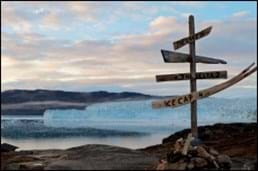L areas are zoned for housing and facilities supporting leisure activities in areas of special recreational value, such as ski resorts, clusters of tourist huts, camp schools, hotels, hiking paths and other sports and recreational activities. To safeguard recreational and landscape interests, a lower maximum building height applies to huts in L areas compared with K areas.
Overall provisions for each subarea can be accessed below.
Subject to restrictions, other commercial activities are permitted provided they are compatible with the overall zoning of the areas. A limited number of private recreational huts, holiday cottages and hunting and emergency huts can be built according to the provisions for K areas, and roads/wheel tracks, public technical supply plants can be constructed. Higher-density housing is allowed to give more ‘urban feel’ to these subareas compared with K areas.
Provisions and subareas
The overall provisions for each subarea are the basis for the municipality's granting of area allotments and building permits.

The minimum distance between huts or any other structure is 30 metres. As required, the municipal council can introduce other minimum distances to the individual subareas. All buildings and technical supply plants are to be maintained regularly to not disfigure the landscape.
In special recreational areas, piers, roads, wheel tracks and paths can be constructed in connection with recreational buildings and facilities. Technical supply plants, such as electricity, water and sewerage facilities can be constructed to serve the individual subareas. The construction of plants for freshwater abstraction and wastewater discharge and major energy supply plants requires planning permission from the Government of Greenland. Small technical supply plants, such as generators, solar panels or other energy production systems can be installed in the immediate vicinity of the individual huts.
Various plants or installations not directly supporting recreational buildings in the subareas can only be built if, when used, they do not cause any convenience to neighbours by emitting noise, smoke, smell, vibrations or the like.
In L areas, distinction is made between five types of huts: recreational huts, holiday cottages, tourist huts/hotels, camp schools, and hunting and emergency huts:
A recreational hut is a hut used for short-term stays. Recreational huts can be used for private purposes only, and the floorage is restricted to 20 m2. No planning permission is required to build a recreational hut.
Holiday cottages are recreational huts used for private purposes. Holiday cottages can have a floorage exceeding 20 m2 and up to 60 m2. Planning permission is required to build a holiday cottage, cf. the current building legislation.
Tourist huts/hotels are huts used or let on commercial terms. Typically, huts are let to tourists or local residents, and can have a floorage up to 200 m2. No specific guidelines exist on the size of tourist huts. Under the current building legislation, planning permission is required to build a tourist hut.
Camp schools are buildings used for municipal purposes, such as by primary and lower secondary schools, after school care or institutions. Camp schools are municipal property. Camp Shools can have a floorage up to 240 m2. Under the current building legislation, planning permission is required to build a camp school.
Hunting and emergency huts are small huts that are accessible to the public for short-terms stays in connection with traditional hunting, sealing, whaling, sheep breeding and leisure activities. Typically, these huts are built by the municipality or an organisation. While no guidelines exist on the size of hunting and emergency huts, such huts are typically small. A planning permission is not required to build such huts under the current building legislation.
The following guidelines apply to the different types of huts:
| Access | Size | Height | Building | Area | |
| Recreational hut | Private | Max. 20 m2 | 2 storeys max. 7.5 m | Planning permission** | + area allotment |
| Holiday cottage | Private | Max. 60 m2 | 2 storeys max. 7.5 m | Planning permission*** | + area allotment |
| Tourist hut | Rental | Max. 200 m2 | 2 storeys max. 7.5 m | Planning permission**** | + area allotment |
| Camp school | Rental | Max. 240 m2 | 2 storeys max. 7.5 m | Planning permission | + area allotment |
| Emergency/hunting hut | Public access | No provisions | 1 storey max. 5.5 m | Planning permission***** | + area allotment |
* In areas zoned for huts, holiday cottages etc. building can be constructed with 2 storeys, provided that it is ground floor and attic.
** "Recreational huts" do not usually need to be processed as construction project applications, unless the building authority judges that an exception is needed and that a construction project application process is need in an individual case.
*** "Holiday cottages" need usually only be processed as construction project applications when the building authority judges that it is necessary in an individual case.
**** "Tourist huts" usually need to be processed as construction project applications, unless the building authority judges that it is not necessary in an individual case.
***** "Emergency/hunting huts" need usually only be processed as construction project applications when the building authority judges that it is necessary in an individual case.
Distances to the coastline and other natural habitats
According to the current legislation on the protection of nature, Act No. 29 of 18 December 2003, placing buildings, planting, cultivation and drainage or other changes in the terrain is prohibited within a distance of 100 meters from salt lakes and saline lakes, trout rivers, hot springs and the coastline.
Recreational and tourist huts can only be placed closer than 100 meters from the said habitats, if this is determined in an addendum to the town plan containing detailed provisions for the subarea concerned.
The Government of Greenland may in special cases grant exemptions from the above distances.




